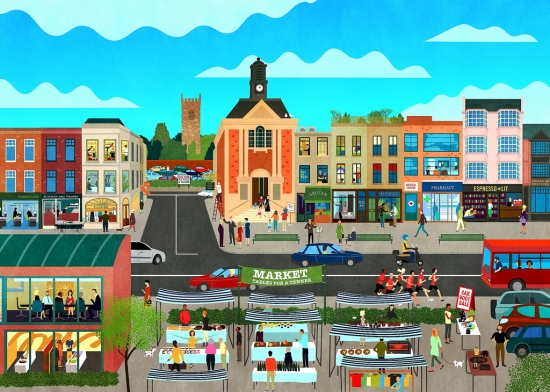Over the coming two decades the number of people aged over sixty in the UK will rise by over 40 per cent. This will change the social fabric of the country, presenting challenges and creating opportunities in equal measure. But what impact will this boom in the number of so-called Third Agers have on our towns and cities?

This question is the subject of a report from Building Futures, the think-tank of the Royal Institute of British Architects (RIBA), which presents a potential vision of the urban environment twenty years into the future.
By 2035 nearly a third of the population will be over sixty. This demographic phenomenon will have a dramatic impact on the cost of welfare and healthcare provision but, at the same time, Third Agers are expected to contribute in the region of £75 billion to the economy. This contribution will come from a combination of taxes, spending power, continued working and volunteering, thus mitigating the challenges associated with an ageing population.
An active Third Age population will not be content with winding down. Instead the over sixties will be gearing up to play a greater role in society, and the report envisions how this might transform the urban fabric of retail, commerce and service provision and the impact this might have on the UK’s beleaguered high streets.
The problems facing today’s high streets have been the subject of much discussion and have given rise to conflicting reports from retail experts Mary Portas and Bill Grimsey. The situation has arisen due to a combination of factors. These include out-of-town competition, the rising popularity of online shopping and increased business rates. Together these have led to record numbers of vacant retail properties in many towns and cities.
In contrast to this, the report sees the high street of 2030 as a hive of activity invigorated by Third Agers who have shifted the balance away from retail towards a more diverse community space. Shops remain but play a less prominent role on the new high street. Instead they have become sites of leisure and recreation with existing buildings accommodating a variety of uses supporting a rich social and civic life.
High streets have been transformed into spaces to meet, dwell and indulge in leisure activities. Families have moved in and, as Third Agers play a greater role in their grandchildren’s care, nurseries and infant schools have become a feature of the high street. There are a large number of cafés and restaurants while other properties house doctor’s surgeries and health and fitness clubs.
Libraries offer life-long learning or provide incubator space for business start-ups, while pubs have become spaces for intergenerational knowledge exchange. There are also offices on the high street and small scale manufacturing premises, largely in the form of 3D printing workshops.
There are also gardens and allotments where food is grown and sold at local markets. Together these innovations have returned the high street to the heart of the community where retail, commerce, and leisure rub shoulders with service provision, all galvanised by the presence of an active Third Age population.
Do you share Building Futures’ vision of the high street of 2030 and how this transformation will be driven, or do you have your own ideas about how vacant properties might be used in the coming years?
Previous Post
Apprenticeship Training Company facing Administration